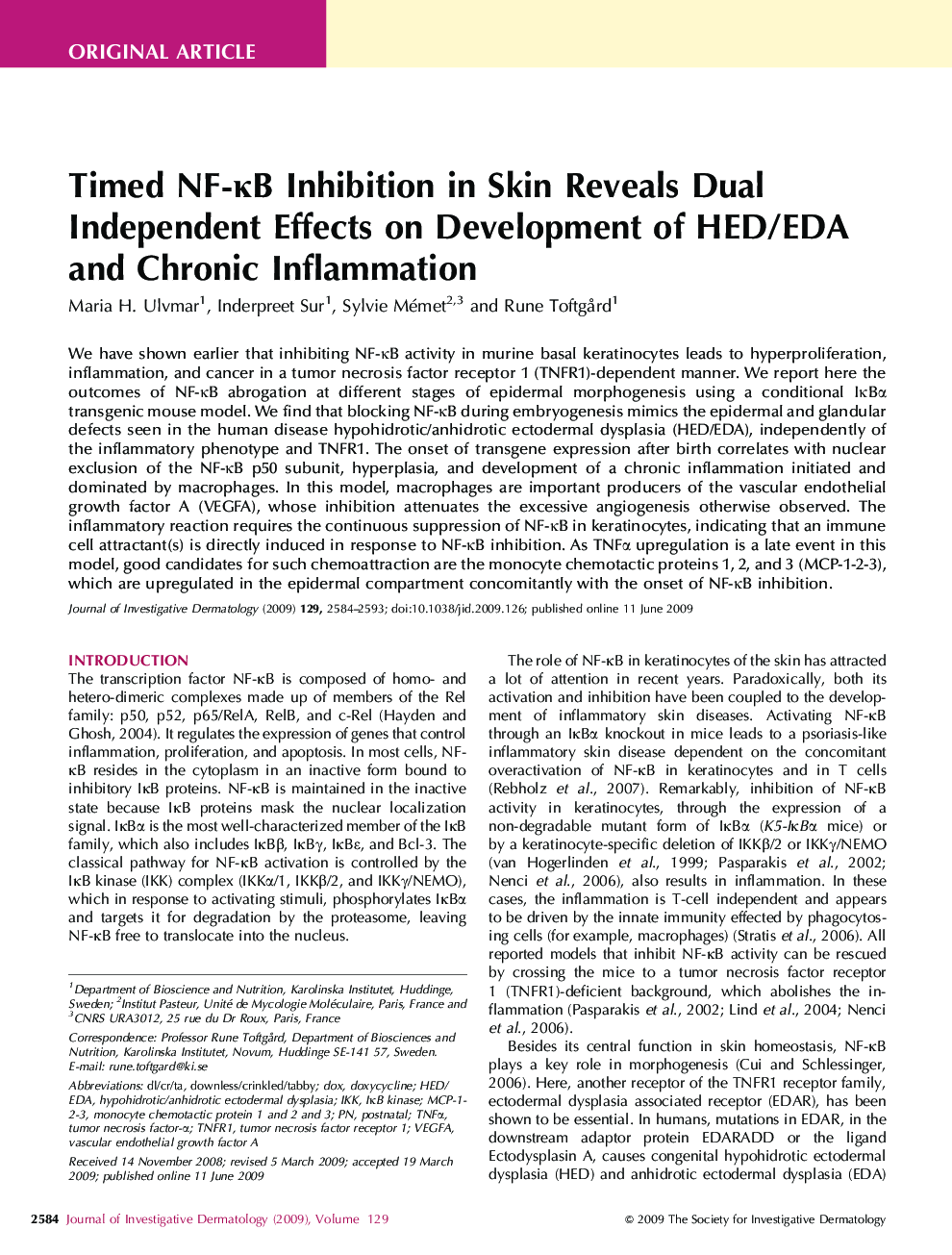| Article ID | Journal | Published Year | Pages | File Type |
|---|---|---|---|---|
| 3217455 | Journal of Investigative Dermatology | 2009 | 10 Pages |
Abstract
We have shown earlier that inhibiting NF-κB activity in murine basal keratinocytes leads to hyperproliferation, inflammation, and cancer in a tumor necrosis factor receptor 1 (TNFR1)-dependent manner. We report here the outcomes of NF-κB abrogation at different stages of epidermal morphogenesis using a conditional IκBα transgenic mouse model. We find that blocking NF-κB during embryogenesis mimics the epidermal and glandular defects seen in the human disease hypohidrotic/anhidrotic ectodermal dysplasia (HED/EDA), independently of the inflammatory phenotype and TNFR1. The onset of transgene expression after birth correlates with nuclear exclusion of the NF-κB p50 subunit, hyperplasia, and development of a chronic inflammation initiated and dominated by macrophages. In this model, macrophages are important producers of the vascular endothelial growth factor A (VEGFA), whose inhibition attenuates the excessive angiogenesis otherwise observed. The inflammatory reaction requires the continuous suppression of NF-κB in keratinocytes, indicating that an immune cell attractant(s) is directly induced in response to NF-κB inhibition. As TNFα upregulation is a late event in this model, good candidates for such chemoattraction are the monocyte chemotactic proteins 1, 2, and 3 (MCP-1-2-3), which are upregulated in the epidermal compartment concomitantly with the onset of NF-κB inhibition.
Related Topics
Health Sciences
Medicine and Dentistry
Dermatology
Authors
Maria H. Ulvmar, Inderpreet Sur, Sylvie Mémet, Rune ToftgÃ¥rd,
